During the summer, Sean Walker explained the work of Weta Digital on Black Widow. Today, he comes back to talk about the impressive final sequence of Shang-Chi and the Legend of the Ten Rings.
Karl Rapley has been working in visual effects for over 15 years. He has worked on many films such as District 9, Prometheus, Avengers: Infinity War and Mortal Engines.
How did you and Weta Digital get involved on this show?
Sean: Chris and his team approached us very early on and I met with them in December 2019. We have worked with Chris Townsend and Damien Carr before on Guardians of the Galaxy: Vol 2, as well as with Chris on Iron Man 3. We’ve done quite a few third act battles for Marvel now so we are very familiar with the process, and being such a creature and FX heavy sequence, Weta made a great fit.
How was the collaboration with Overall VFX Supervisor Christopher Townsend?
Sean: Chris was great—we have worked with him before and he is really open to collaborating and allowing us to pitch our own ideas. He gave us a bit more creative freedom in certain areas, and was excellent at allowing us to work closely with Destin the director, and the studio. He organised a fair bit of face time so we could discuss everything with them directly.
Karl: He was also quite funny! And yes, very open to collaboration and finding the best idea for a shot.
Sean: Yes, it was always enjoyable, with lots of laughs and an all-round positive attitude
What were his expectation and approach about the visual effects?
Sean: The VFX had to be amazing, of course, but the key expectations Chris and myself established at beginning were to be open and flexible to any changes Marvel and Destin might challenge us with, especially at the tail end of production. The main expectation, aside to providing amazing quality work, was to be able to visually tell the story they wanted to tell. Story is key with Marvel and as much as possible, we wanted to accommodate any changes they needed make throughout production.
Karl: We also had to make a lot of fantastical stuff, like dragons, demons and magical weapons, look realistic and believable.
What are the sequences made by Weta Digital?
Sean: We focused on the third act battle and worked on 305 shots, which starts when Shang-Chi gets punched into the water at Ta Lo Lake.
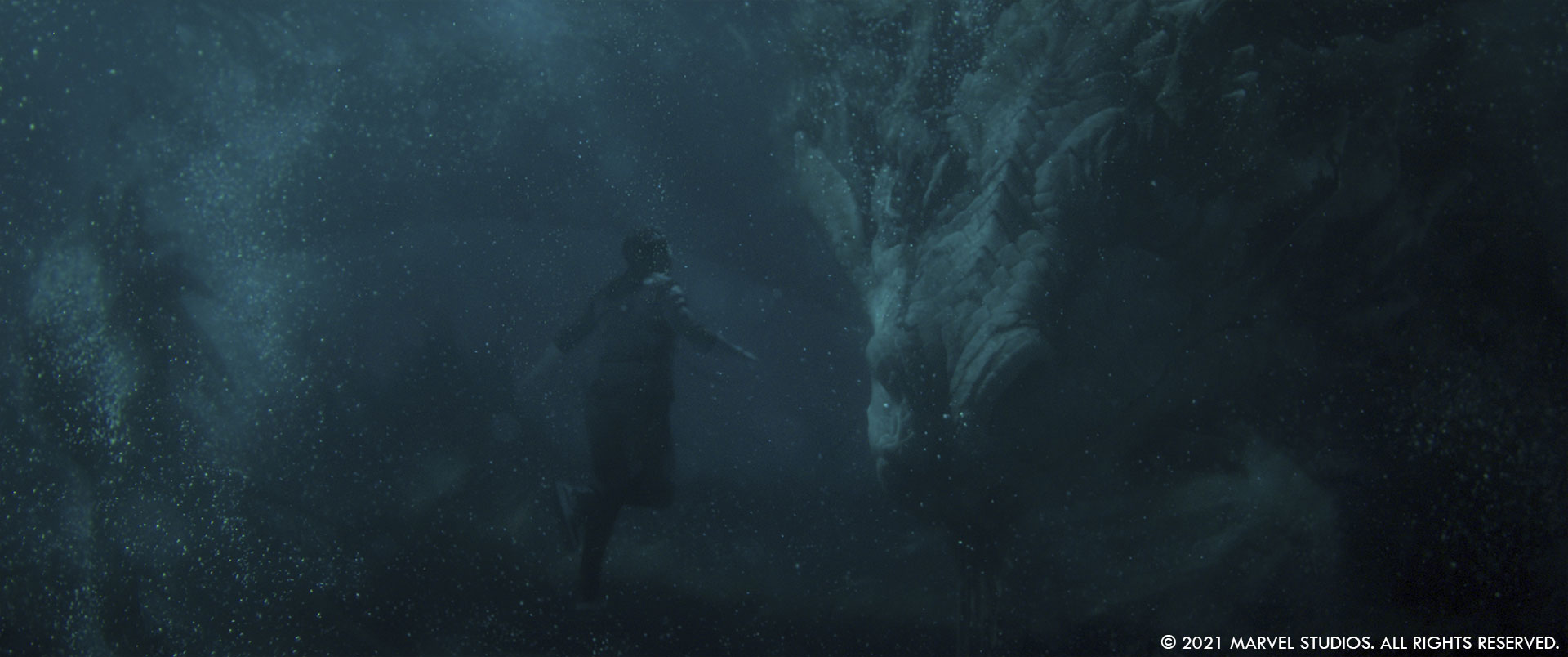
Can you elaborates about the design of the beautiful dragon and the terrible creature?
Sean: We worked on the Great Protector and the Dweller in Darkness. The design of the Great Protector was based very closely on Marvel’s original concept work. They wanted her to feel natural and beautiful, while also being strong and majestic. The 8,000 scales that made up the dragon were individually placed, and we shaded her scales with a translucent quality to bring her to life.
The Dweller in Darkness is a massive 250m long dragon, with no eyes and a mouth full of teeth. It was designed to be very aggressive, with spikes and tentacles, and skin that was plated but also had a leathery feel. It was built with a full skeletal, muscular and vascular system, which we used to show it powering up. The internal veins would shine through translucent parts of the body revealing its skeleton and muscles.
Karl: It had a lot of tentacles to wrangle, and a lot of arms – nine tentacles, four arms, and two big legs in total – which was a big challenge to animate as it needed to work in harmony.
What kind of references and indications did you received?
Sean: For the Great Protector’s look, we referenced albino lizards, crocodiles and snakes. We used these as reference for the translucency of the scales to give her a sense of blood and life. We also added iridescence to the scales, inspired by paua shells, to indicate the power level of the dragon. We could dial this in per shot, bringing it up when she was strong or dialing it back when she was struggling.
Karl: For her animation, we looked at sea snakes and iguanas swimming through the water, as well as traditional ribbon dancing and rhythmic gymnastics for the dragon’s posing and shape. We did a lot of deep-diving into the character and wider research, then sent our thoughts back to Marvel to check that we were aligned with how she should move.
How did you handle the dragon’s fur and fish scales?
Sean: The Great Protector’s fur was a bit of a challenge because the motion of it affected her sense of scale. If it moved too freely, it would make her feel small, but too stiff would look like hair spray. We also removed the effects of gravity for the most part to retain the groom shape. We treated her hair dynamics as if she was “swimming” through the air.
Can you tell us more about their rigging and animation?
Karl: We used a spline-based rig and predominantly path-based animation to ensure the Great Protector had a fluid movement through the air, as well as intentional head movements and a very expressive tail.
For the Dweller in Darkness, it was pretty challenging as we had to find ways to animate this very large and heavy creature—which had a lot of joints—while ensuring fidelity when it used all of its tails to wrap around the dragon. We had to design a lot of animation “costumes” for it for a couple of reasons; so we could improve its performance in our working scenes and also simplify its structure and focus on its core body mechanics. We could take the wings and limbs off so it looked like a plucked chicken. This allowed us to get the base body mechanics right before adding the details and other layers back in. For the tails, these were key- framed as you can’t really mocap a dragon, so we had really talented artists key- framing and using sine wave deformers for the tails’ key shapes.
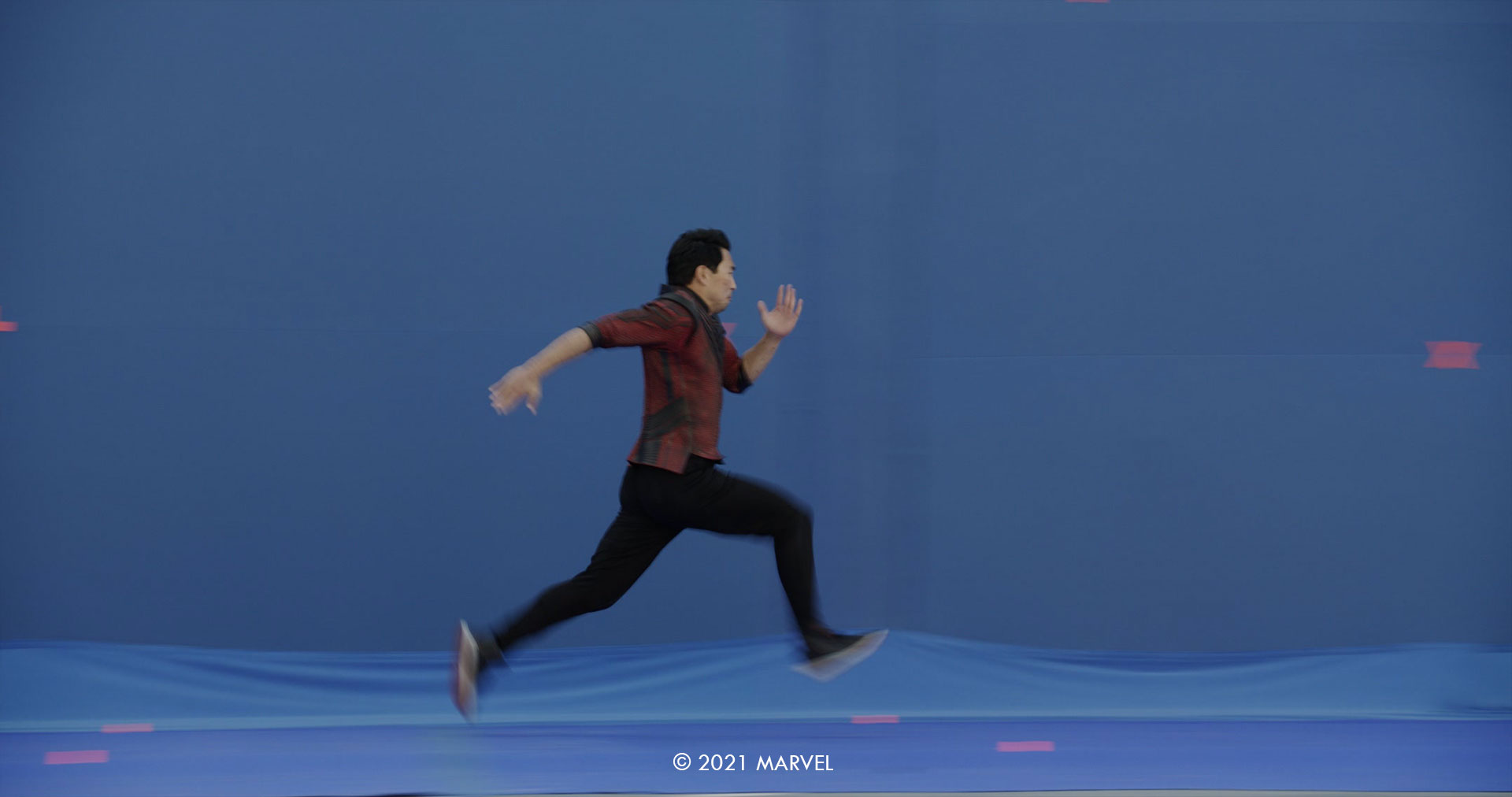
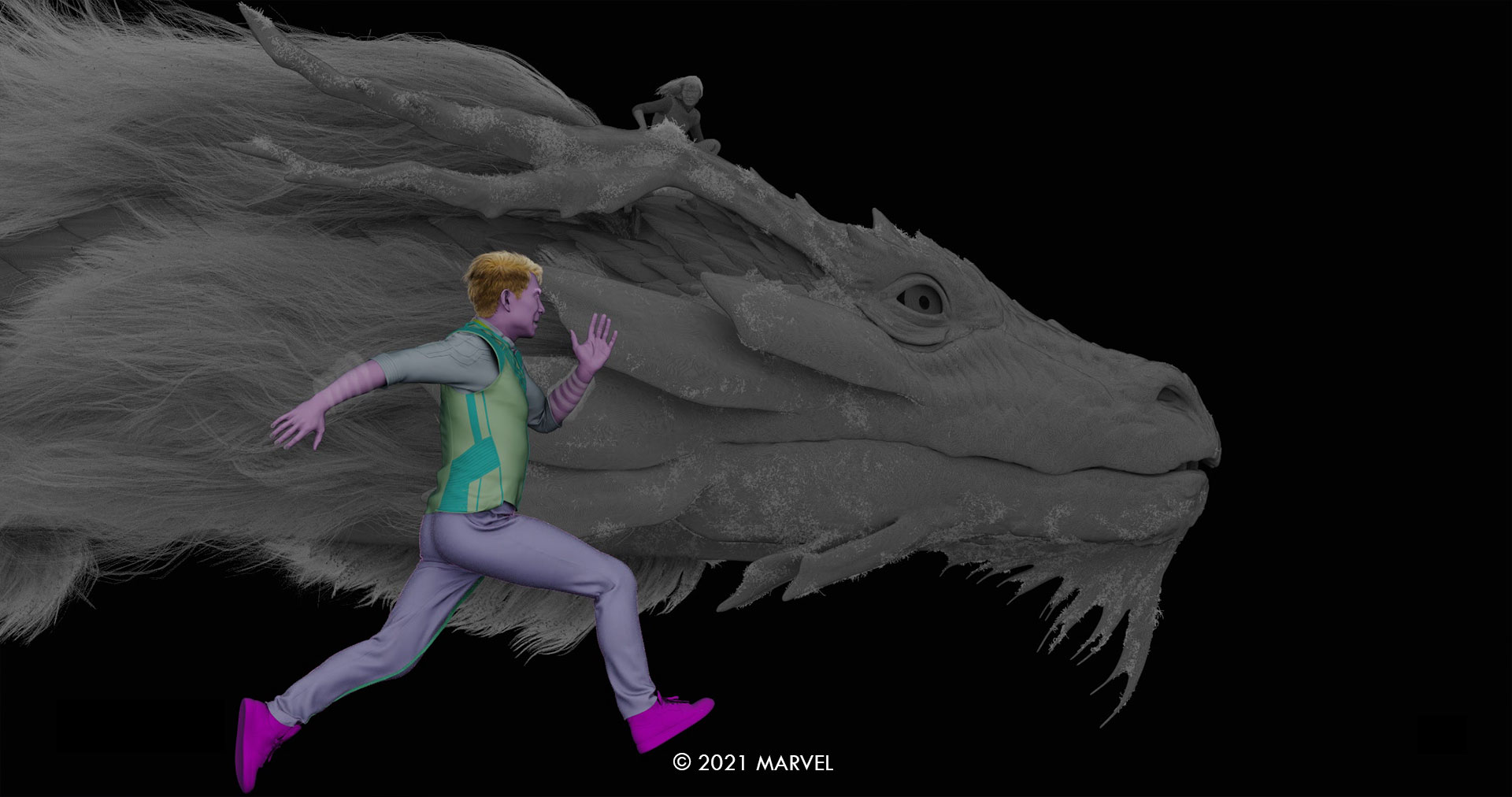
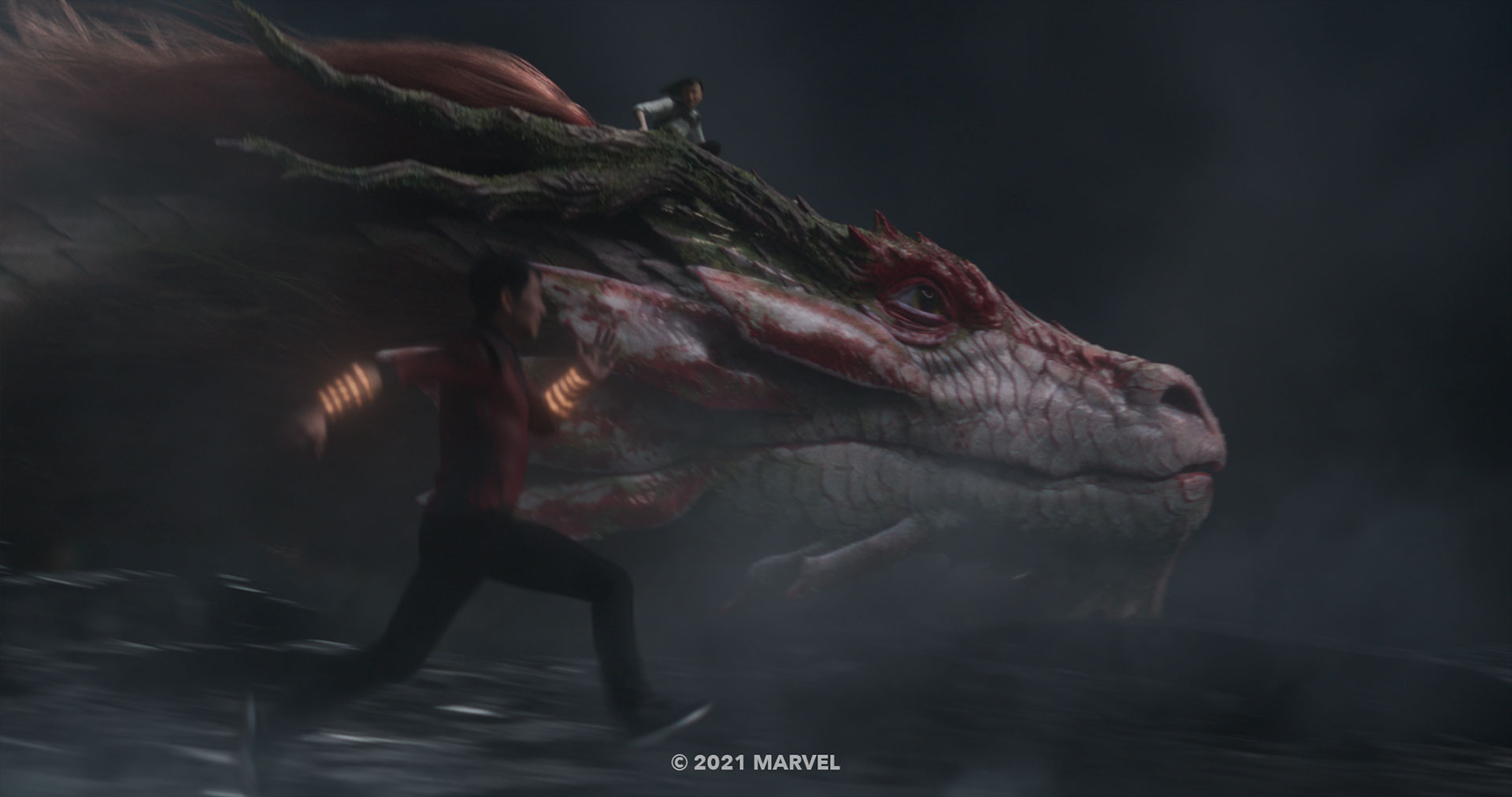
The dragon has a really long shape. How did you handle this aspect for the animation?
Karl: It was a challenge! The Great Protector had to move really fast, but she also had to be calm and the total opposite of the Dweller in Darkness. There were a lot of problems to solve, including how can she fly if she doesn’t have wings? We also needed for her to move slowly, circling around herself, and we ended up treating the tail as if the dragon was pushing herself through water. She had a physically expressive tail and a determined, focused head, and needed to be both super aggressive or super calm depending on what the moment called required… whilst also being constantly in movement! She was beautiful but dangerous.
How did you used the Weta Digital experience in dragons for this one?
Karl: We definitely relied on the experience here at Weta. We spoke to the Animation Supervisor who had worked on Game of Thrones and The Hobbit and picked his brain, the main difference being that their dragons were Western-style dragons, not serpentine like the Great Protector.
Sean: Our experience with dragons really helped with the Dweller in Darkness, especially when it came to the movement and shading. The Great Protector was a little new for us, creating a dragon without wings, but it was a fun challenge as we hadn’t created a dragon this beautiful before.
How does their massive size affects your work?
Sean: In terms of framing hero characters against the giant creatures, it was pretty hard at times. We had to stage them in certain ways so you could still see everything that was going on. The hero characters are very small compared to the creatures.
What are the main challenges to choreography the fight between these two massive creatures?
Karl: The main challenges were balancing the small elements against the humungous, and trying to make all of that action understandable and clear. Marvel like to be super clear in their storytelling so there can’t be too much room for interpretation, as the audience has to know what is happening at all times. The camera work helps with that.
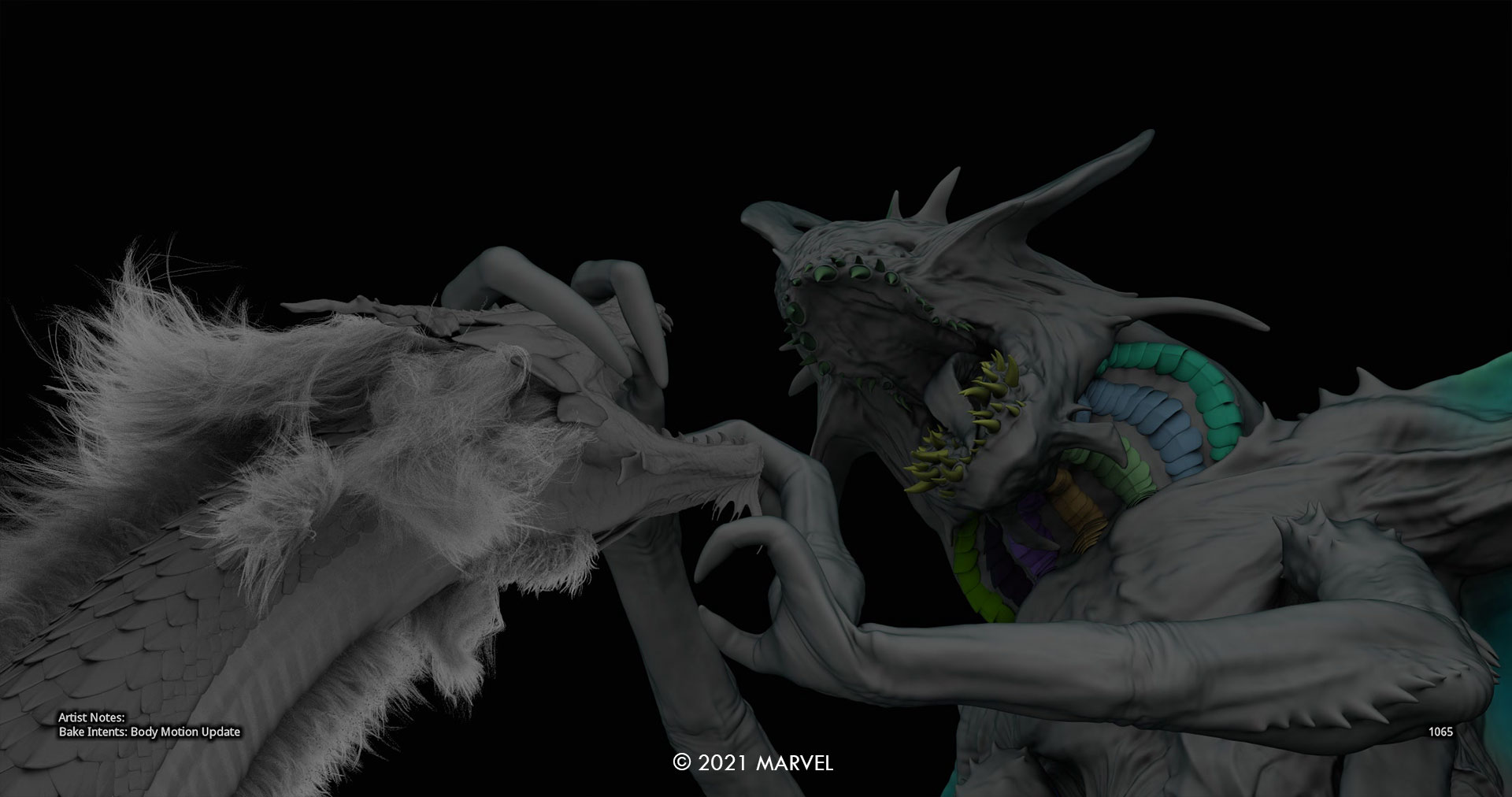
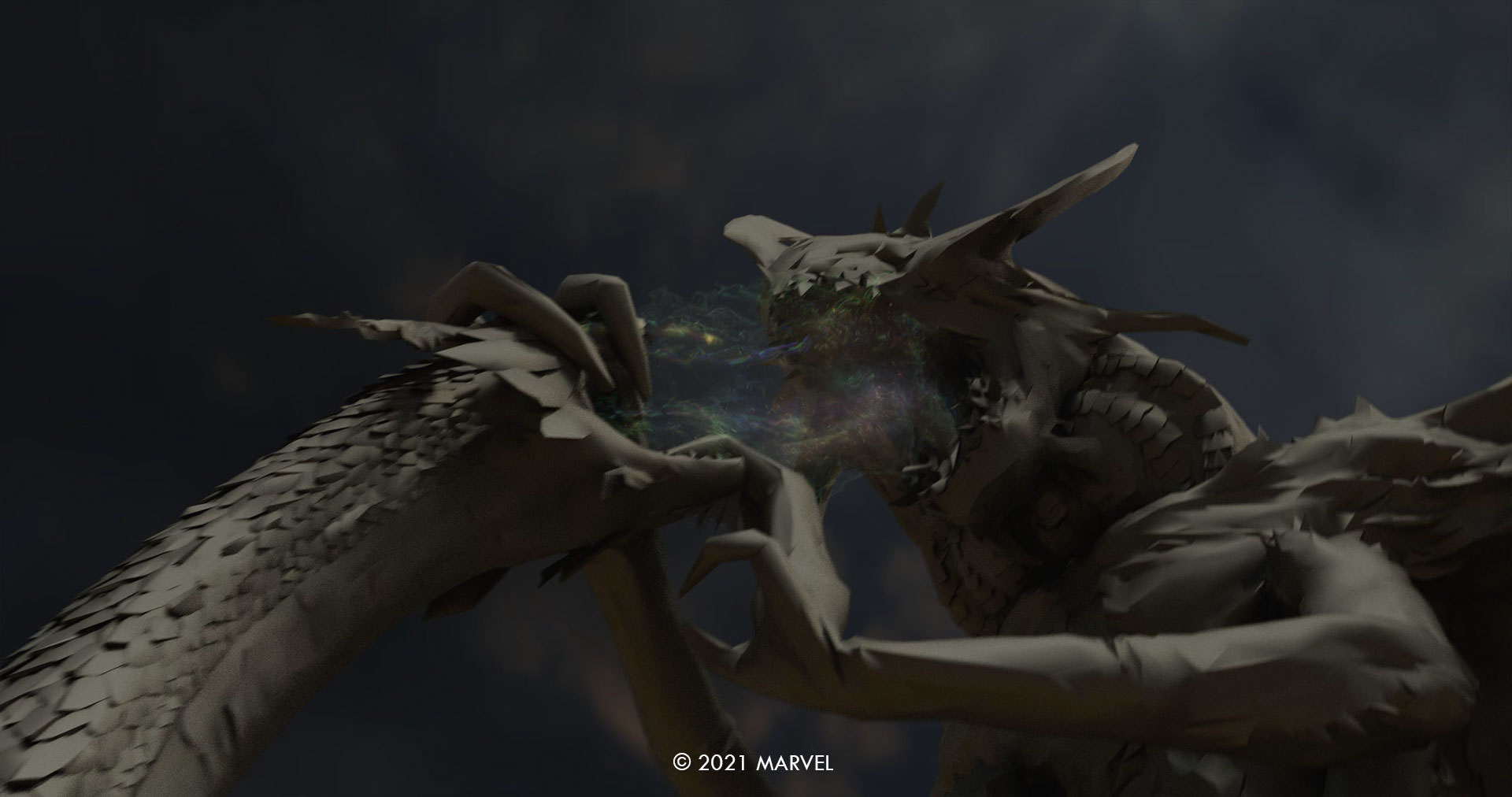
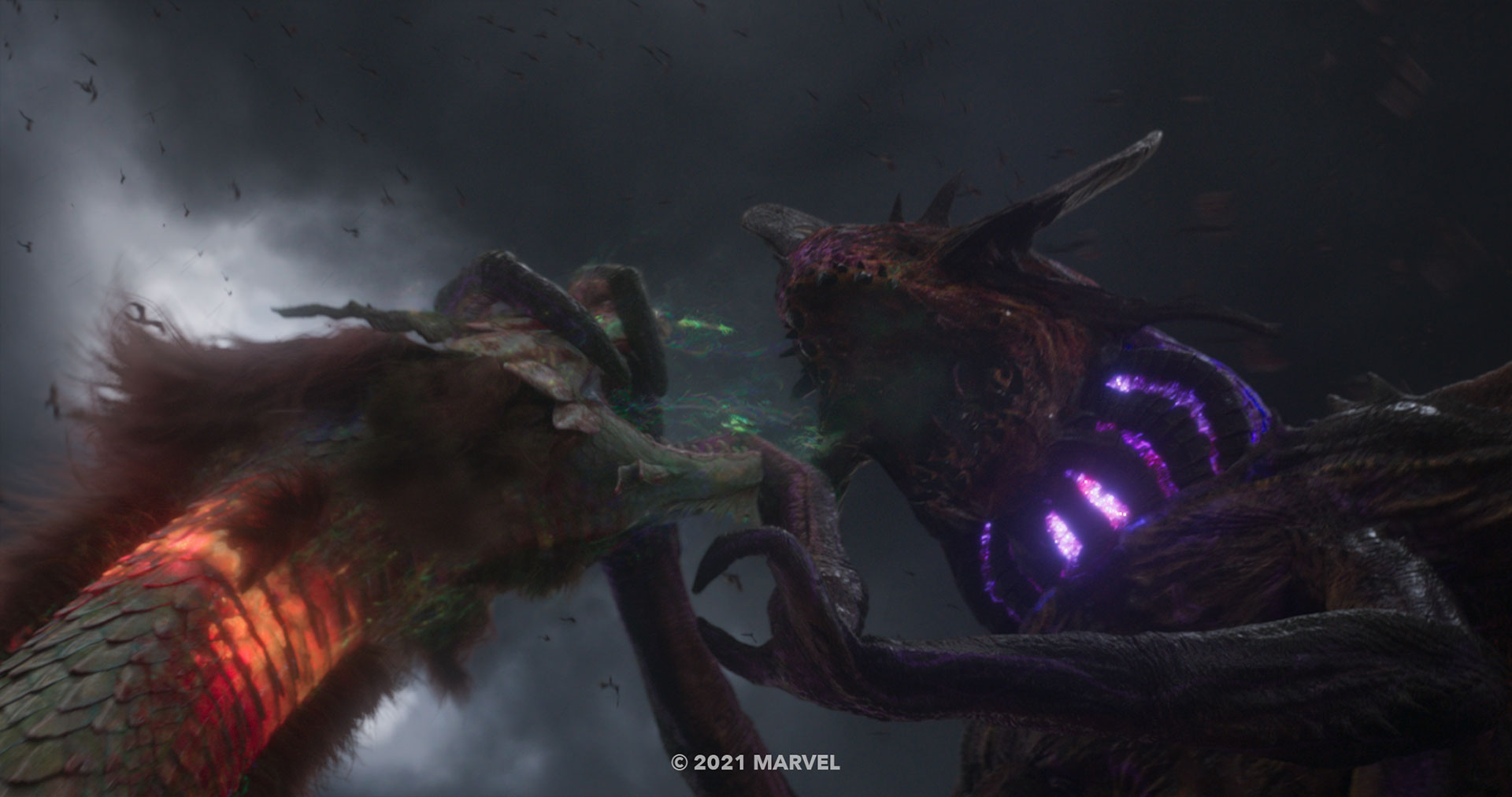
The big creature use smaller ones to stole souls. How did you manage their interactions with the actors?
Sean: We tried to honour the stunt work that was captured on set as much as possible, however we did end up using digi-doubles for some of it. We started by match-moving all of our interactions, but often would need to replace the actors entirely to get that really fine detail of interaction between the stunties and the many, many tentacles that the demons have.
How did you create and animate the stealing of the souls?
Karl: We did a lot of early animation tests, as previs showed that the demons had to be able to steal souls. We ended up putting forward a rather aggressive and brutal solution, unsure if it would get approved, with the tentacles going down the throat to steal the souls, however Marvel dug it and we scaled it up from there. Hopefully we don’t give too many children nightmares!
The final battle take place in the massive environment of Ta-Lo. How did you create it?
Sean: For the full Ta Lo environment, we shared this with Rising Sun Pictures who created central part of the village, while we created the Mountain of Souls area. We created a version that encompassed the whole environment in Clarisse with our matte painting department. They also generated atmospherics and reflection passes that we could use to dial in, in comp. For much of the close-up work, we used our standard pipeline and rendered everything in Manuka. Atmospherics we a combination of Eddy renders, VDB splat and Clarisse.
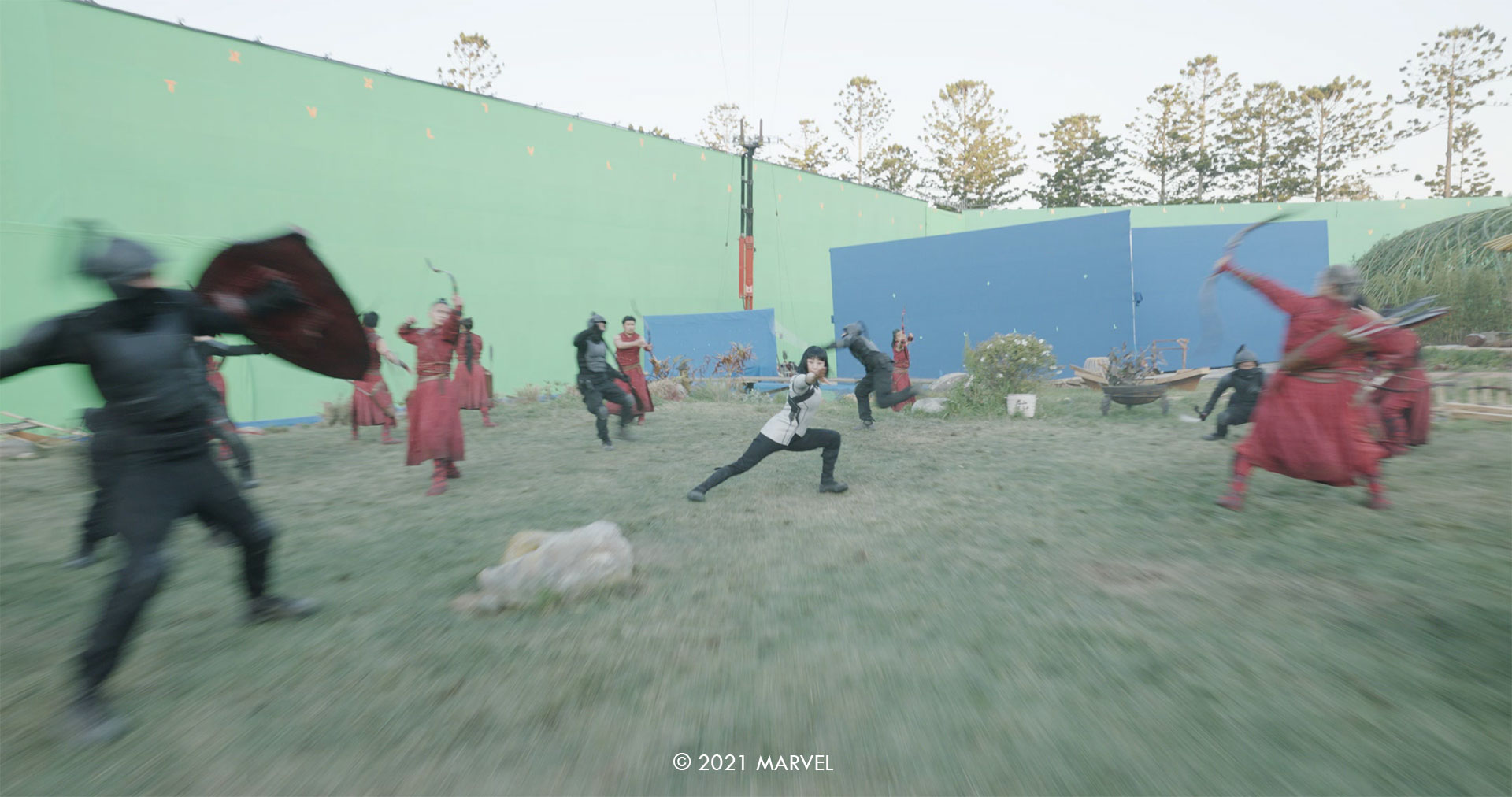
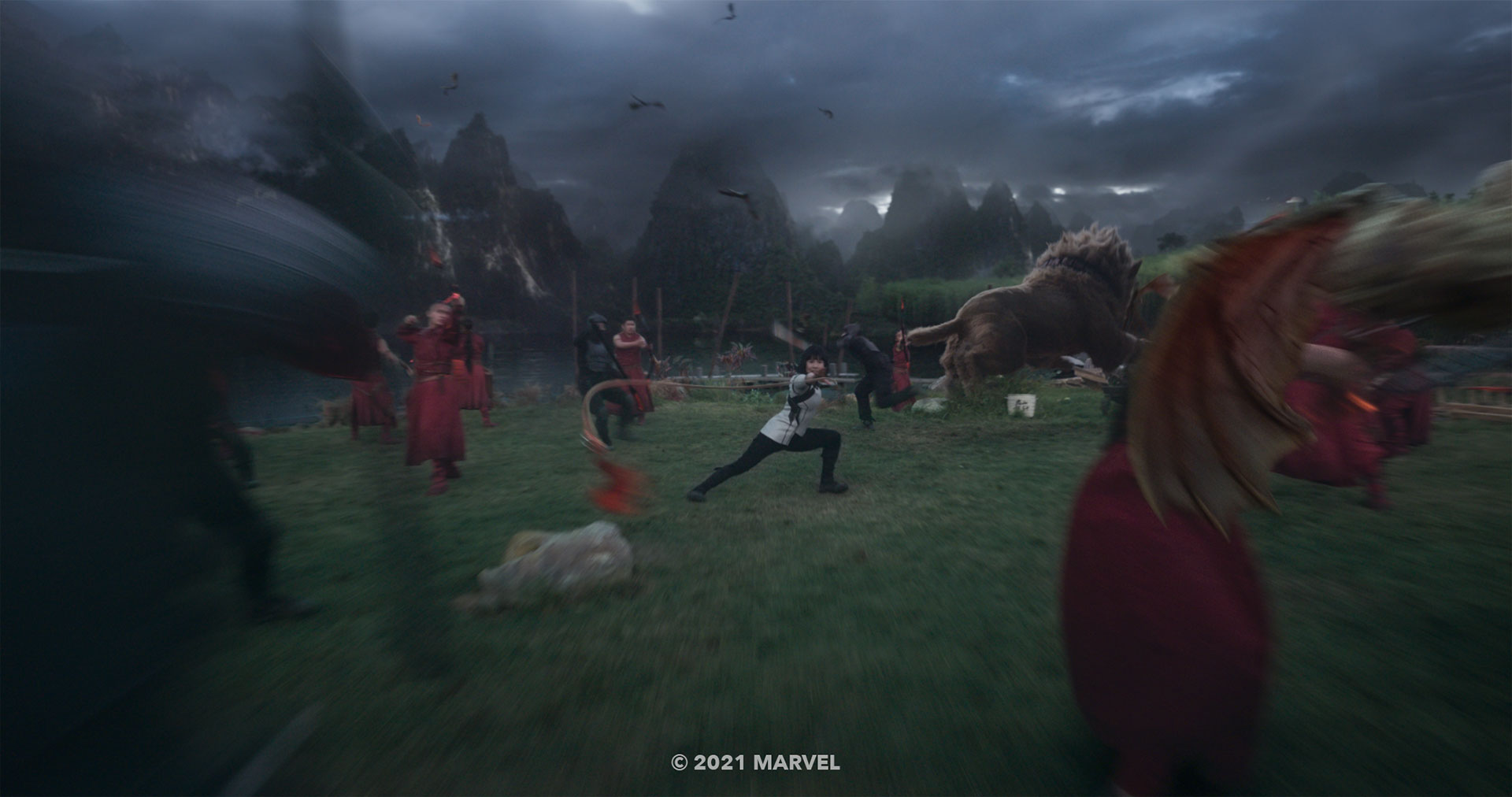
Can you elaborates about the water FX simulations for the lake?
Sean: Water FX simulations started with animation and they created a base for FX to generate their water FX from. They used a cacheless delivery system to animation allowing us to do fast iterations and maximise efficiencies when animating the water. We created the water surface and all the water FX in Houdini, which was all rendered in Manuka. We created a bit of a production line for the water effects. Artists specialised in very specific parts of the water FX – one would focus on the surface, one on the spray, one on the spin-drift, another on additional ripple details. This helped to maximise our efficiencies and kept the look of the water consistent across the sequence.
Karl: The water really was a superhero and character unto itself.
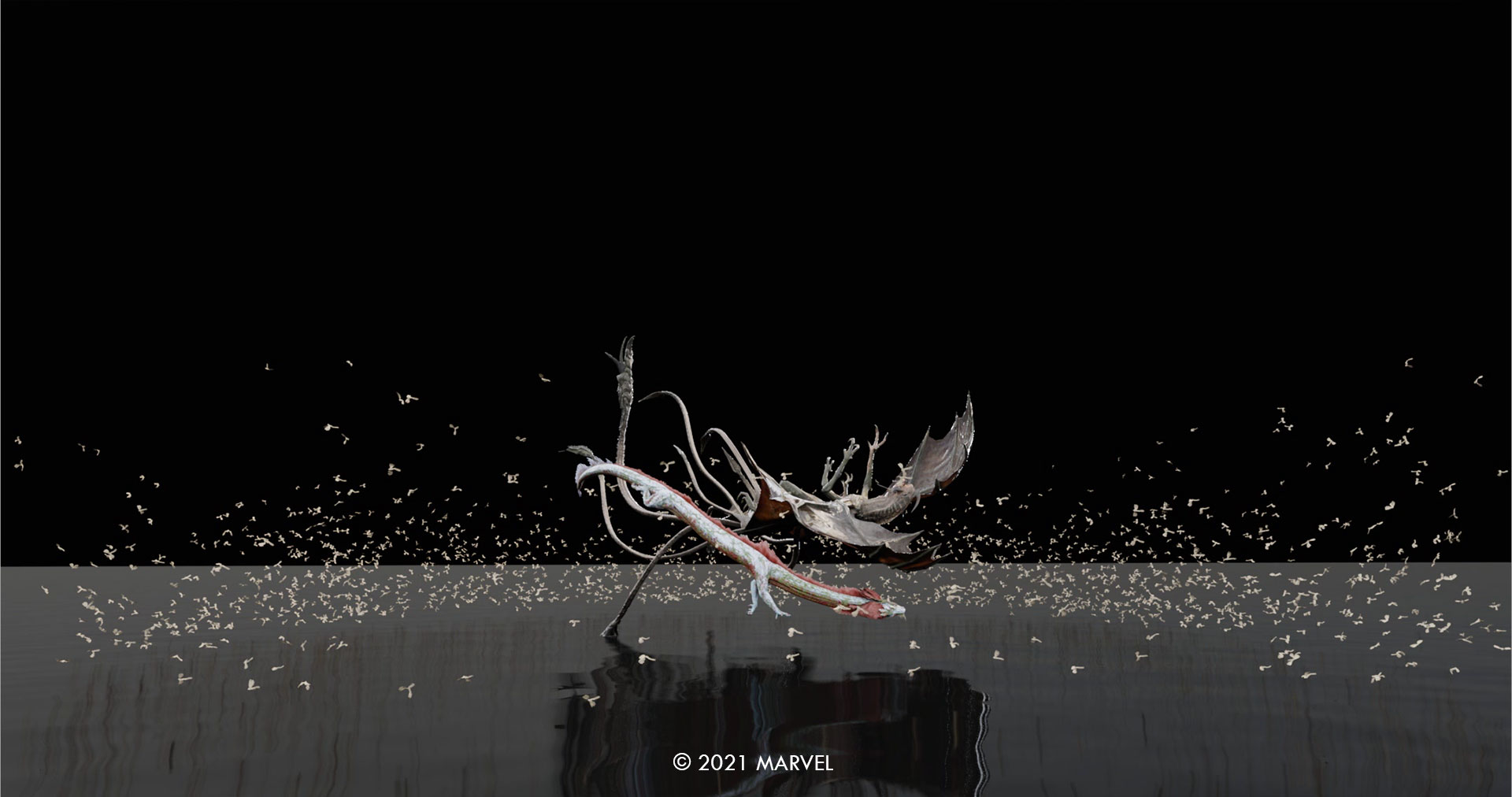
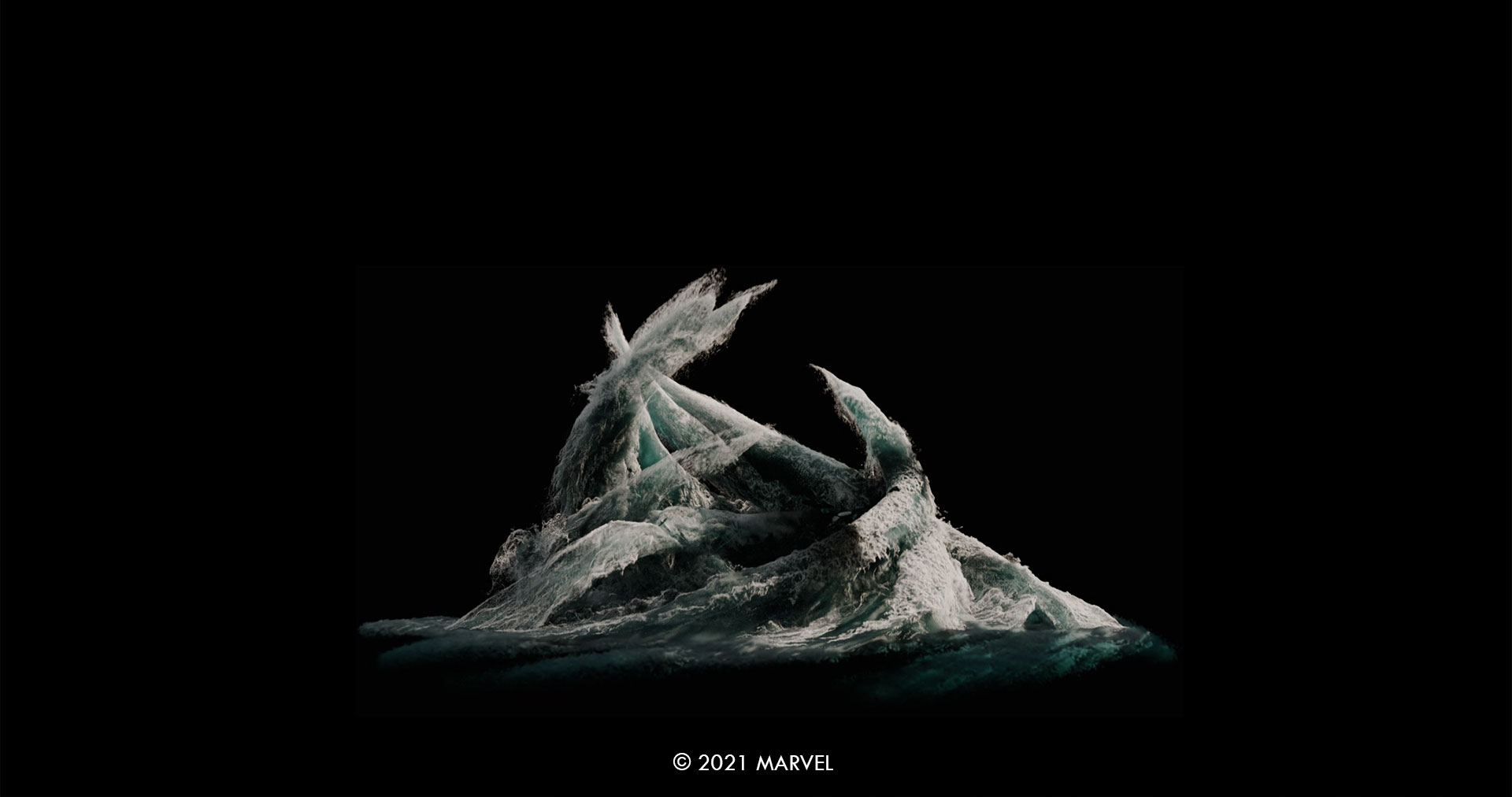
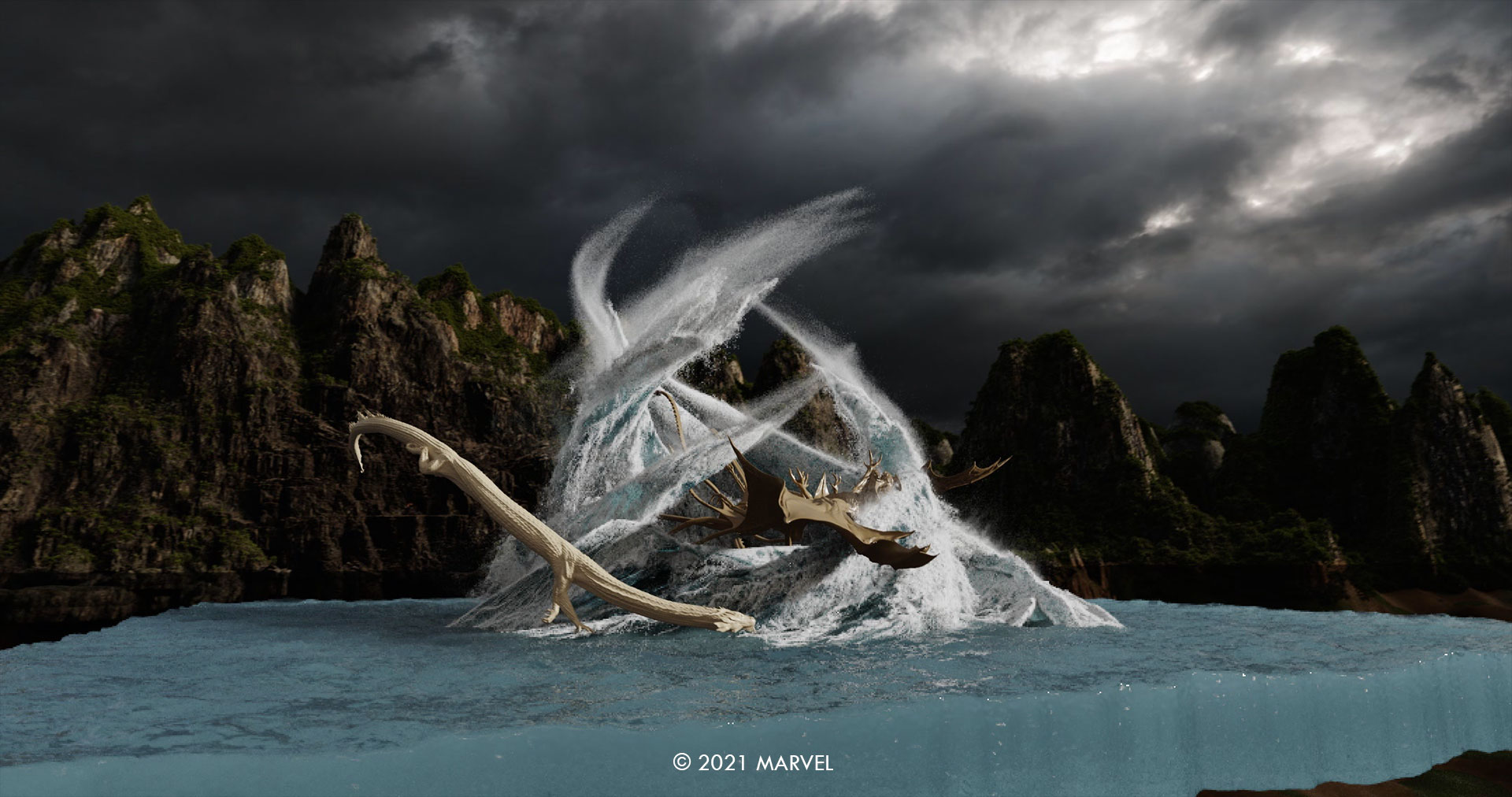
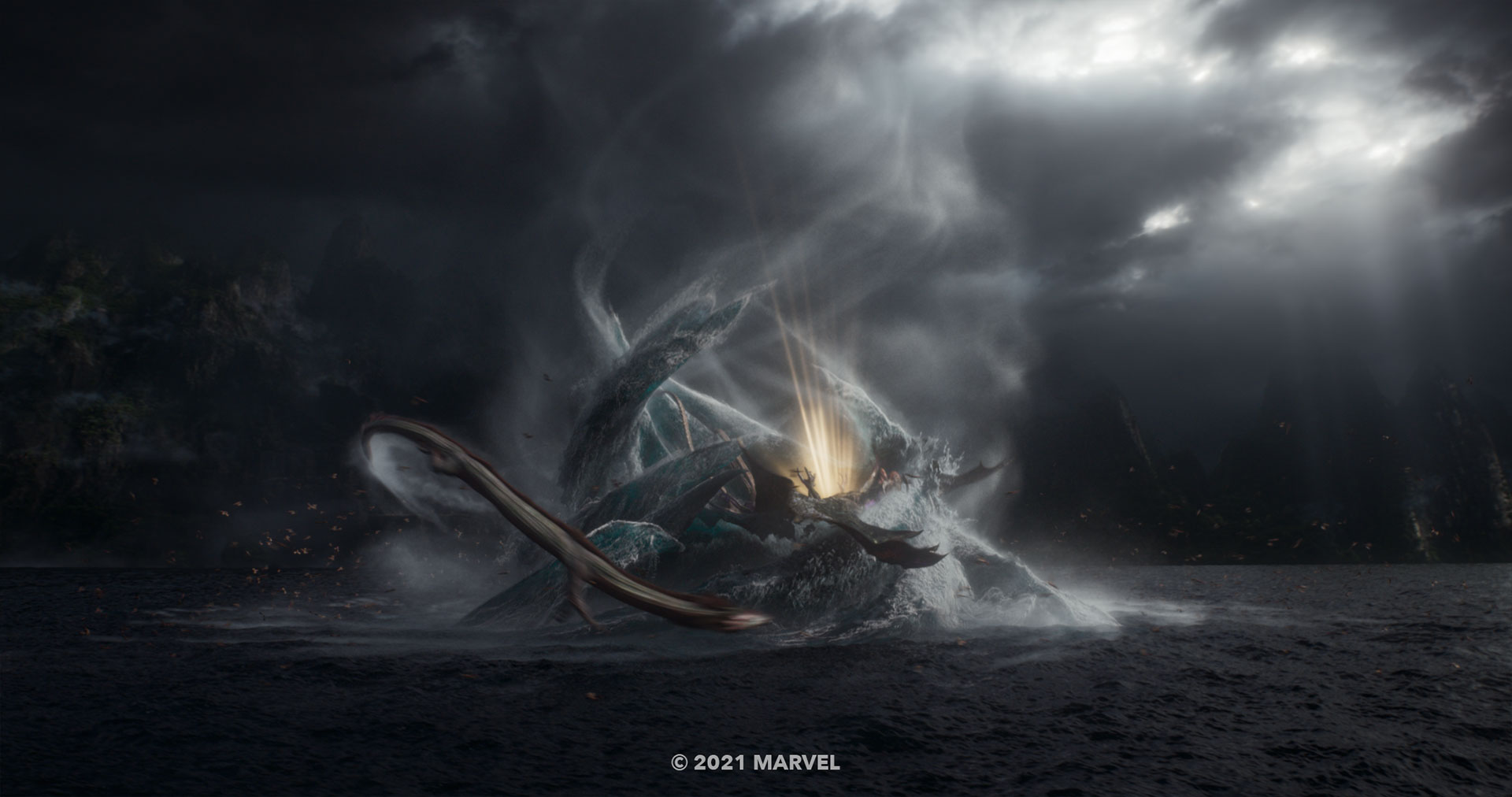
Which shot or sequence was the most challenging?
Karl: When reviewing the sequences at the end, you could see that every single shot had something unique about it, whether it was multiple fantastical creatures or having to integrate plates with two dragons fighting in mid-air. It was all very hard stuff, but it was super cool, the coolest action I have been involved with and it kept me going as it was so exciting. Super exciting but super challenging.
Sean: Taking a look at the entire sequence, it’s hard to pick one thing that was particularly harder than the rest. This show was very much a challenging one, and it had very few low-hanging fruit shots that were simple to execute.
Is there something specific that gives you some really short nights?
Sean: Rendering a lot of the water effects all at once. Because of the complexity of it all and the frame counts, we had to take up a good percentage of our render wall at times to force our way through the work.
Karl: For me it was the pure amount of tentacles and demons, and finding a way to make it all achievable.
What is your favorite shot or sequence?
Sean: The one where we show off the Great Protector the most—she has just been freed by Xialing and looks down at her. That was the hero shot of the dragon and where I knew we had created something beautiful.
Karl: I have a few, but really dig the one where Shang-Chi runs the length of the Dweller in Darkness, dodging attacks and throwing his rings around.
What is your best memory on this show?
Sean: We had a great team and I enjoyed working with everyone on it. When you have such a good team any great work or challenges become much simpler.
Karl: It was a really good team with positive attitudes, which made the hard work worth it!
How long have you worked on this show?
Around 18 months.
What was the size of your team?
350 people.
What is your next project?
We’re working on future Marvel projects.
A big thanks for your time.
WANT TO KNOW MORE?
Christopher Townsend: Here is my interview of Overall VFX Supervisor Christopher Townsend about Shang-Chi.
Weta Digital: Dedicated page about Shang-Chi on Weta Digital website.
© Vincent Frei – The Art of VFX – 2021





I love that vfx